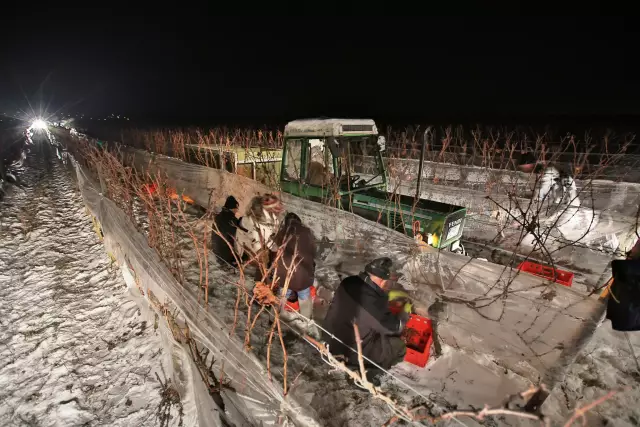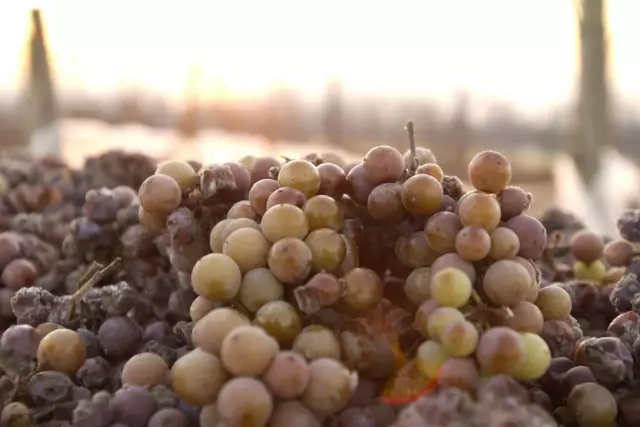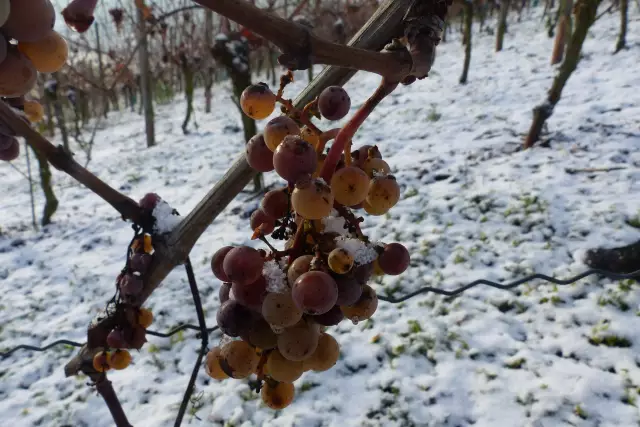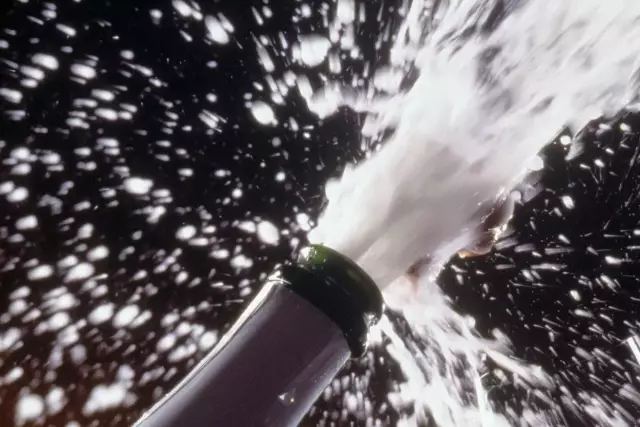Ice Wine

Wenn Winzer pokern, ist der Einsatz hoch. Es geht um Trauben, die länger als sonst üblich am Rebstock hängen bleiben und auf Temperaturen von mindestens -7°C warten.
Facts
-
-7°C
Grapes that hang on the vine longer than usual and wait for temperatures of at least -7°C can be used for ice wine.
-
1830
Ice wine was first documented in 1830, when winemakers in Dromersheim near Bingen in the Rhine-Hesse region accidentally discovered on February 11 that a wonderfully sweet must could be made from frozen grapes.
-
100
German ice wines usually have very high natural residual sugar contents of well over 100 grams per liter
Ice wine - a winemaker's gamble
In some years, precious rarities reward winemakers' willingness to take risks. When winemakers play such poker, the stakes are high. It's about grapes that stay on the vine longer than usual and wait for temperatures of at least -7 ° C. The winemaker's game with nature can last until January, and in rare cases until February. For the winemaker, it is all or nothing, because the ‘ice wine poker’ carries the risk of total loss.
If it doesn't get cold enough, ice wine cannot be produced. Only about 5-10% of the original harvest quantity is bottled as ice wine on average. The remaining amount of grapes is selectively cut out or falls victim to the unpredictable weather conditions.
The winemaker's masterpiece
The actual ice wine harvest, which in the vast majority of cases takes place in the early morning hours, is exhausting. The cold makes the fingers rigid and sensitive to pain. The frozen berries are laboriously harvested, and in the end the harvest quantity is often only between 300 and 500 liters per hectare. Nevertheless, the production of an ice wine is a challenge that a winery likes to face because this specialty is always seen as a masterpiece of the winemaker, which can only be produced in northern wine regions.
These requirements make things exciting not only for the winemaker but also for ice wine fans from all over the world who keep looking at the thermometer from the start of the harvest, hoping for a cold snap. The wine, which is produced as a rarity right from the start, draws collectors to the scene. High prices are asked for these noble treasures and the few available bottles are always in high demand.
The berry must freeze on the vine
It has been known since the very beginning of viticulture that minus degrees can be helpful in wine production. As early as 44 AD, the Roman writer Pliny reported on wines made from frozen grapes. In Germany, ice wine is documented for the first time in 1830, when winegrowers in Dromerheim near Bingen in Rhineland-Hesse accidentally discovered on February 11 that a wonderfully sweet must could be obtained from frozen grapes. With an amendment to the German Wine Law in 1982, "Eiswein" was raised to an independent attribute with corresponding regulations for berry selection, such as a minimum must weight of 110 to 128 ° Oechsle, depending on the growing region.
In contrast to the other noble sweet wines such as Auslesen, Beerenauslesen and Trockenbeerenauslesen, the secret of ice wine lies in the dense concentration of the berry ingredients and a comparatively high degree of acidity. This phenomenon is achieved by freezing the berries on the vine. At least -7 ° C is required before the ice wine grapes can be harvested, ideally it is -10 to -12 ° C. The naturally frozen grapes are pressed in this “icy” condition early in the winter morning. The water contained in the berries remains as ice on the wine press, while only the sweetest juice, whose freezing point is lower than that of water, is obtained as a highly concentrated must.
The yeasts have great difficulty fermenting must with such a high sugar content to wine. Therefore, German ice wines generally have a very high natural residual sugar content of well over 100 grams per liter, but in contrast to southern sweet wines, they only have a relatively low alcohol content - often only around 7% by volume.
A premium ice wine needs healthy grapes
Passionate ice wine growers pay close attention to a healthy harvest without botrytis, which is responsible for the so-called noble rot. A premium ice wine needs above all healthy grapes as a starting material and this is exactly where the taste differs from other noble sweet wines such as Beerenauslesen and Trockenbeerenauslesen. A high-quality ice wine does not have the taste characteristics of noble rot. Rather, the healthy grapes guarantee a fresh and concentrated fruity taste, and the wines generally have a relatively stable acidity. Ice wines are therefore a pleasure even at a young age.
The culmination of a culinary evening
Ice wine is a grandiose companion for festive occasions and an excellent aperitif that will delight gourmets. When the meal is completed, ice wine promises a brilliant finish: One can follow the recommendation of ‘like complements like’, especially with fruity desserts, ice cream or sorbets.
Or alternatively, follow the recommendation that ‘opposites attract’. An interesting contrast, even if it may sound unbelievable at first, is enjoying ice wine with mature fine cheese: on the one hand the salty to slightly bitter notes of the creamy cheese, on the other hand the fruity-sweet aromas of the concentrated wine, both contrasting flavors enveloping the palate and tongue, offering an exceptional taste experience.
Why and how are grapes protected that are left hanging for ice wine?
The ice wine plots are partially defoliated and wrapped in film. This process is primarily used to protect the fully ripe grapes from being eaten by birds and was first used in the 1960s. Without the film protection, no grapes would remain on the vine until December or January.







